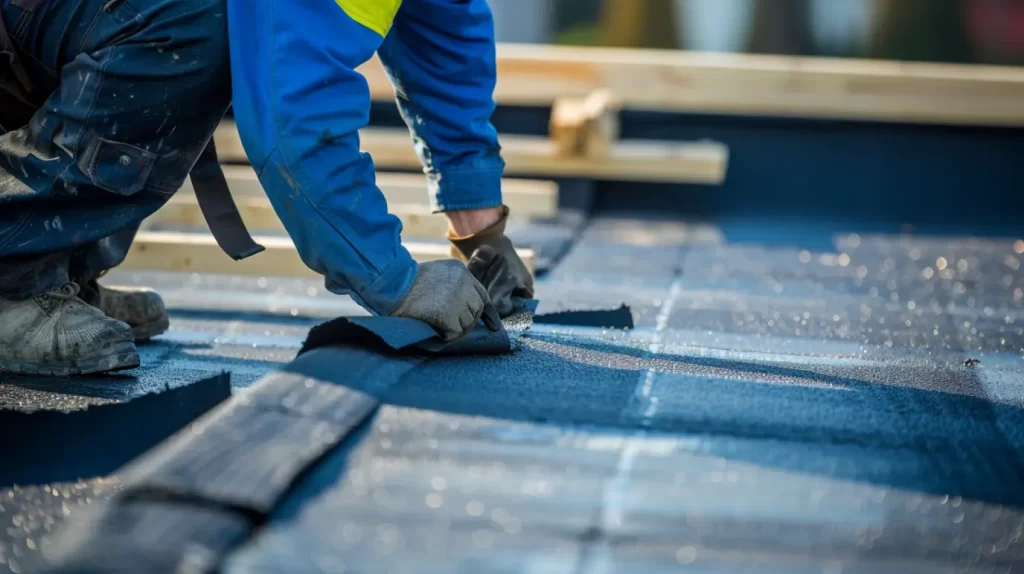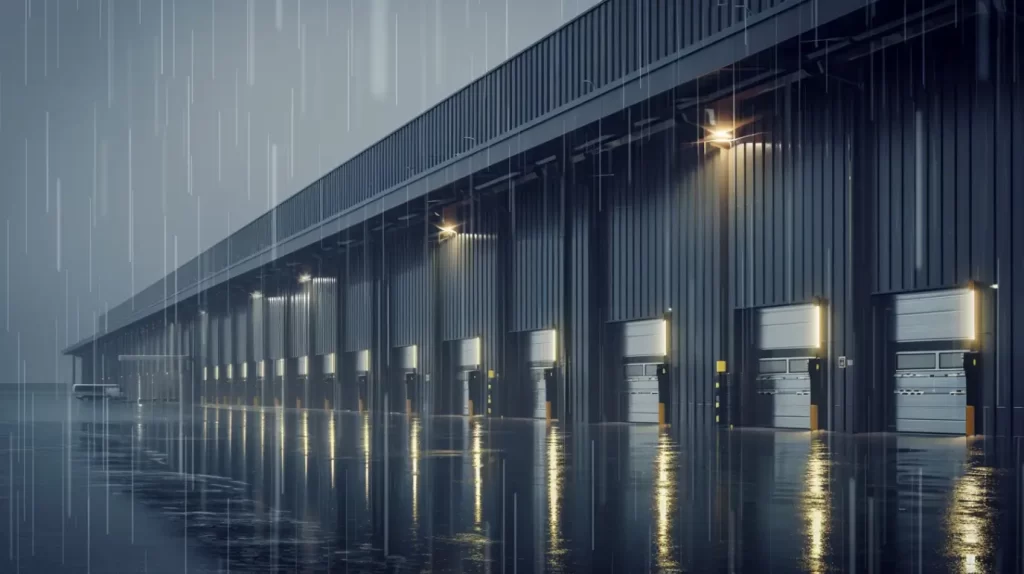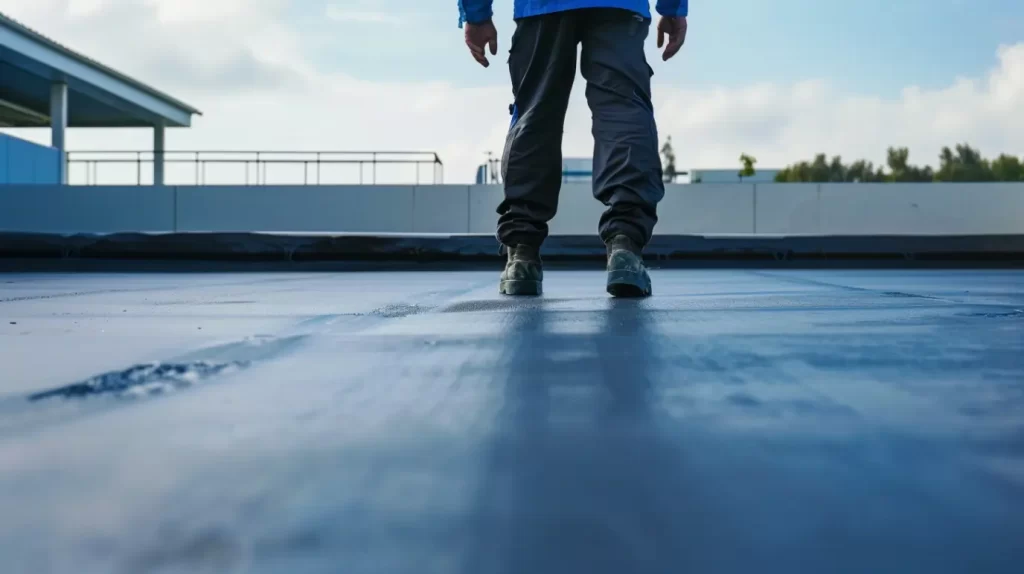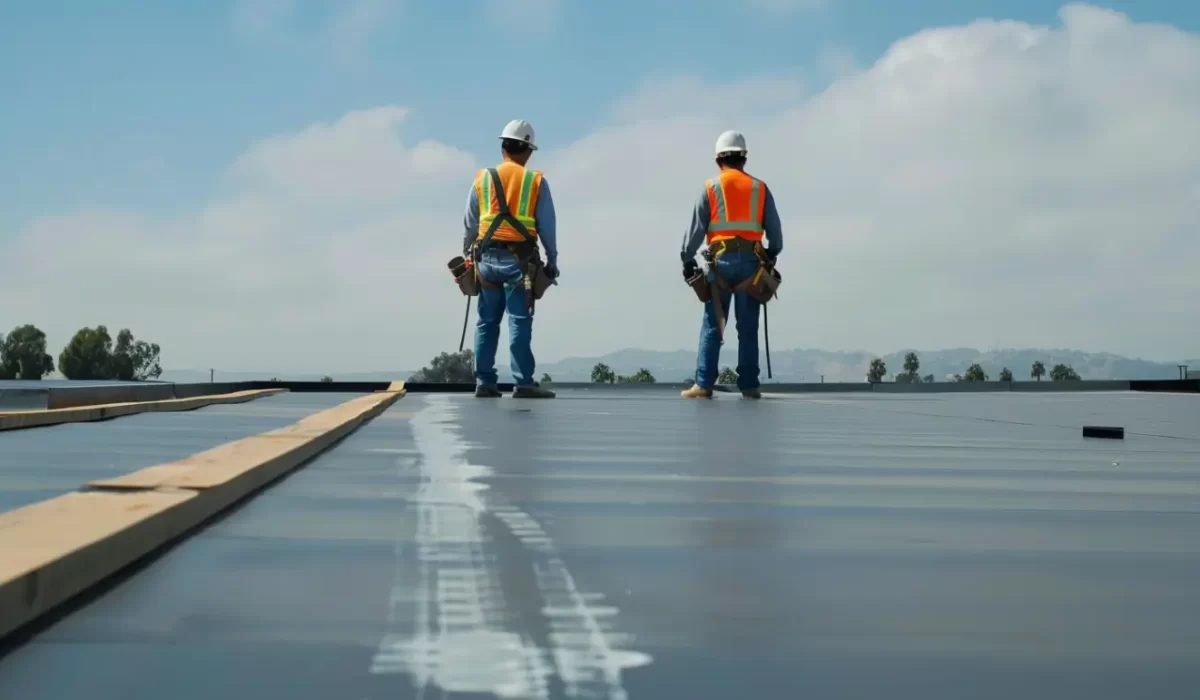The longevity of community building roofs is vital for structural integrity and investment maximization. Effective roof coating strategies from Fontaine Roofing in Anaheim, CA, enhance energy efficiency while protecting against extreme weather and moisture infiltration. By using the right coatings, property owners can reduce water damage risks and costly repairs. Understanding available roof coatings and maintenance practices is essential for prolonging roof lifespan and ensuring optimal performance.
Understanding Roof Coating and Its Importance for Community Buildings
Effective roof coatings are crucial for building integrity. They prolong roof lifespan, boost energy efficiency by reflecting UV rays, and prevent moisture and mold growth. Understanding these benefits helps property owners make informed roofing decisions. As a GAF Master Elite Contractor and CertainTeed Shingle Master, we bring recognized expertise to every project. Our credentials as a Polyglass Preferred Contractor, FiberTite approved applicator, and IB Roofing Systems Authorized Applicator demonstrate our commitment to quality. Additionally, our TRI certification and memberships in CACM, CAI, and NRCA underscore our dedication to exceptional roofing solutions that meet industry standards.
Contact Us
How Roof Coatings Extend Roof Lifespan
Effective roof coatings serve as protective layers that significantly enhance the roof’s lifespan. By applying these coatings, property owners can shield roofing materials from UV radiation, extreme weather, and moisture infiltration, thereby preserving the structural integrity of the roof. Additionally, coatings improve energy efficiency by reducing heat absorption, which can help mitigate the urban heat island effect. With regular inspections and maintenance, these solutions can prevent costly repairs and extend the roof’s life well beyond its anticipated expectancy.
Common Roofing Challenges Faced by HOAs and Property Managers
Significant concerns arise for HOAs and property managers regarding the durability of roofing systems. Issues such as water infiltration and structural damage can lead to costly repairs and diminish a roof’s lifespan. Regular inspections are essential to address minor problems before they escalate. Adverse weather conditions, including extreme temperatures and heavy rain, exacerbate these challenges, as can the urban heat island effect in densely populated areas. Ensuring proper maintenance and selecting durable roofing materials can greatly mitigate these risks.

Types of Roof Coatings Used in Residential and Community Settings
Various roof coatings suitable for residential and community settings enhance the roof’s lifespan and protect against environmental challenges. Acrylic coatings offer excellent UV protection and are ideal for moderate climates, while silicone coatings excel in water resistance, making them perfect for flat roofs. Polyurethane coatings provide superior durability, particularly in harsh conditions, ensuring longevity for roofs subjected to thermal stress. Understanding these options empowers property owners to choose the most effective solution for their specific roofing needs, ultimately preserving structural integrity.
Comparing Roof Coating Types
Acrylic, silicone, and polyurethane coatings each offer unique benefits, suitable for various roofing systems. Acrylic coatings are known for their UV resistance and cost-effectiveness, making them ideal for warmer climates. Silicone coatings excel in providing outstanding water resistance and are particularly effective in managing moisture infiltration. Polyurethane coatings, while more expensive, deliver superior durability against thermal stress and heavy foot traffic, ensuring structural integrity. Selecting the appropriate coating enhances the roof’s lifespan, ensuring long-term cost savings and optimal performance against environmental conditions.
Top Roof Coatings for Flat & Low-Slope Roofs
Elastomeric coatings stand out as exceptional options for flat and low-slope roofs due to their flexibility and robust UV protection. These protective layers effectively combat thermal stress and moisture infiltration, ensuring the roof’s integrity and longevity. Additionally, silicone coatings deliver remarkable waterproofing benefits, making them ideal for areas experiencing heavy rain. Choosing the right coating not only enhances energy efficiency but also minimizes potential issues, thus extending the lifespan of the roofing system while safeguarding against costly repairs.

Factors Affecting Roof Coating Performance
Several critical factors influence the effectiveness of roof coating strategies, particularly in community settings. First, environmental conditions play a significant role, as extreme weather patterns can affect the coating’s durability and adhesion. Additionally, the substrate condition is vital; an inadequately prepared roof surface may lead to issues such as moisture infiltration and reduced longevity of the protective layer. Regular inspections, attention to roof type, and climate variations ensure timely interventions that preserve the roof’s integrity and prolong its lifespan.
Anaheim, CA Climate and Weather Factors
Temperature fluctuations and high UV radiation in Anaheim, CA and similar areas create unique challenges for roofing systems. The combination of harsh sunlight and extreme weather can contribute to the degradation of roofing materials, necessitating a reliable roof coating to enhance longevity. Properly selected protective coatings, such as acrylic or silicone, offer superior weather resistance and UV protection, crucial for maintaining structural integrity. Regular inspections and maintenance plans are essential for identifying potential issues early and ensuring optimal performance under these specific environmental conditions.
Substrate Condition and Preparation Requirements
Preparation of the substrate is crucial for maximizing the effectiveness of roof coatings. Ensuring the roof surface is clean and free from contaminants like dirt, grime, and biological growth is essential to maintaining the roof’s integrity. Additionally, any minor damage such as cracks or loose materials must be addressed to prevent costly repairs later. Properly assessing and repairing the underlying roofing materials guarantees optimal adhesion and long-lasting results, ultimately extending the roof’s lifespan against harsh weather conditions and preventing moisture infiltration.

Post-Coating Roof Maintenance Tips
Regular inspections are essential after the application of roof coatings to ensure optimal performance and extend the roof’s lifespan. Property owners should adhere to a maintenance plan that includes frequent assessments for potential issues, such as mold growth or signs of water infiltration. Addressing minor repairs promptly can prevent extensive damage and costly repairs later. Furthermore, maintaining a clean roof surface free from debris ensures the protective coatings function effectively, safeguarding the roofing materials against harsh weather conditions and UV radiation.
Inspection Schedules for Best Roof Performance
Regular inspections are crucial to maintaining roof integrity and maximizing the lifespan of coating systems. Property owners should schedule comprehensive assessments at least twice a year, particularly after severe weather events. These inspections should focus on identifying signs of wear, such as water damage or missing shingles, which can lead to costly repairs. Establishing a routine maintenance plan, including cleaning and minor repairs, not only promotes energy efficiency but also prevents more extensive damage and extends the roof’s life significantly.
Recoating vs. Repairs: Key Warning Signs
Telltale signs of potential issues include visible cracking or peeling of the roof’s surface, often indicating the protective coatings have degraded. Spotting mold growth or areas of moisture infiltration can signal underlying problems that require immediate attention. Regular inspections during seasonal transitions can help identify minor damage, such as missing shingles or extensive wear, which could compromise the roof’s integrity. Proactive measures, including a maintenance plan, enhance the roof’s lifespan and stave off costly repairs before they escalate.
Get in Touch
Effective roof coating strategies are crucial for extending the lifespan of community buildings. By choosing protective layers such as acrylic, silicone, or polyurethane coatings, property owners can prevent moisture infiltration and thermal stress. Regular inspections and minor repairs enhance roof integrity. Companies like Fontaine Roofing in Anaheim, CA, can ensure optimal coating application. Investing in quality roof coatings promotes energy efficiency and significant cost savings, improving the longevity and performance of urban roofing systems.
Read our blog: Flat Roof Options for HOA and Commercial Complexes
Frequently Asked Questions
What is the spray on roof for longevity?
Spray-on roofs enhance longevity by creating a seamless, waterproof barrier that protects against UV rays and extreme weather. This application minimizes the risk of leaks and damages, significantly extending the lifespan of roofing materials in both residential and community settings.
What are the disadvantages of roof coatings?
While roof coatings offer many benefits, they can also present disadvantages such as limited lifespan, potential adhesion issues, and the need for proper surface preparation. Additionally, some coatings may not perform well in extreme weather conditions or might require frequent maintenance.

